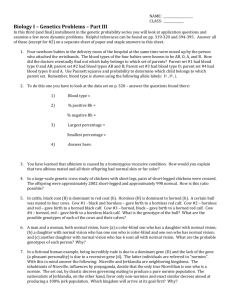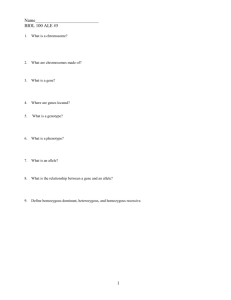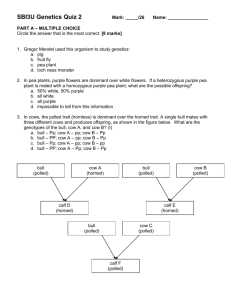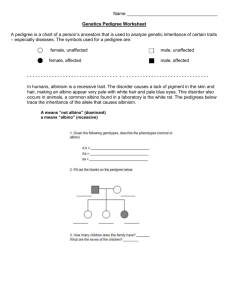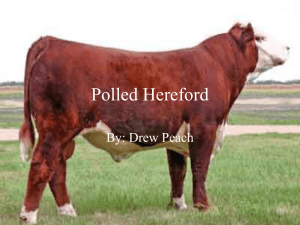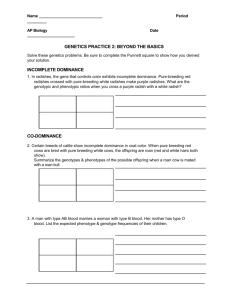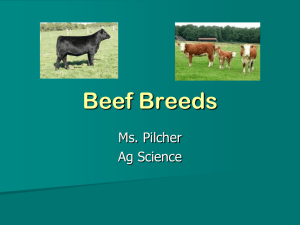Single-trait problems (from tcet) KEY
advertisement
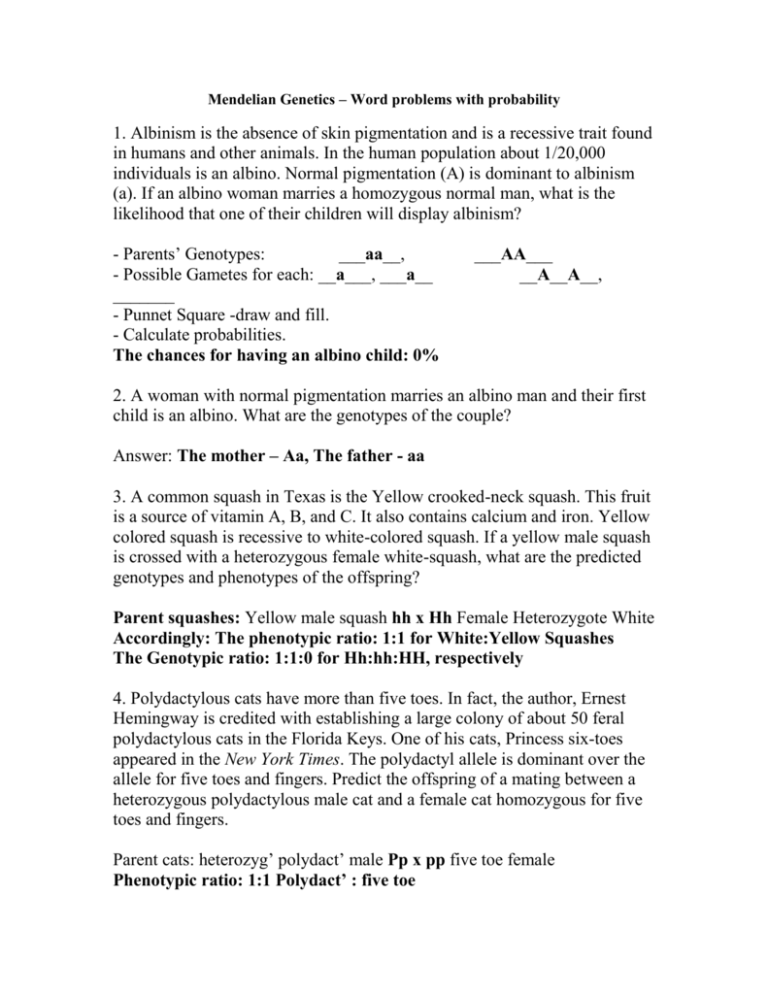
Mendelian Genetics – Word problems with probability 1. Albinism is the absence of skin pigmentation and is a recessive trait found in humans and other animals. In the human population about 1/20,000 individuals is an albino. Normal pigmentation (A) is dominant to albinism (a). If an albino woman marries a homozygous normal man, what is the likelihood that one of their children will display albinism? - Parents’ Genotypes: ___aa__, - Possible Gametes for each: __a___, ___a__ _______ - Punnet Square -draw and fill. - Calculate probabilities. The chances for having an albino child: 0% ___AA___ __A__A__, 2. A woman with normal pigmentation marries an albino man and their first child is an albino. What are the genotypes of the couple? Answer: The mother – Aa, The father - aa 3. A common squash in Texas is the Yellow crooked-neck squash. This fruit is a source of vitamin A, B, and C. It also contains calcium and iron. Yellow colored squash is recessive to white-colored squash. If a yellow male squash is crossed with a heterozygous female white-squash, what are the predicted genotypes and phenotypes of the offspring? Parent squashes: Yellow male squash hh x Hh Female Heterozygote White Accordingly: The phenotypic ratio: 1:1 for White:Yellow Squashes The Genotypic ratio: 1:1:0 for Hh:hh:HH, respectively 4. Polydactylous cats have more than five toes. In fact, the author, Ernest Hemingway is credited with establishing a large colony of about 50 feral polydactylous cats in the Florida Keys. One of his cats, Princess six-toes appeared in the New York Times. The polydactyl allele is dominant over the allele for five toes and fingers. Predict the offspring of a mating between a heterozygous polydactylous male cat and a female cat homozygous for five toes and fingers. Parent cats: heterozyg’ polydact’ male Pp x pp five toe female Phenotypic ratio: 1:1 Polydact’ : five toe Genotypic ratio: 1:1:0 Pp:pp:PP 5. In cattle the polled hornless condition (P) is dominant to the recessive condition of horned (p). A heterozygous polled bull breaks out of his pen and mates with the following three cows (cow #1) homozygous dominant polled hornless (cow #2) horned, and (cow #3) heterozygous polled hornless. What is the probability that all offspring will be horned? HINT: The probability of three independent events occurring at the same time is the product of the probability for each independent event. For each cow, the chances for horned offspring: Cow#1: Pp (hornless) x PP (hornless) – no chance for a hh horned. Cow#2: Pp (hornless) x pp (horned) – 50% chance for a hh horned. Cow#3: Pp (hornless) x Pp (hornless) – 25% chances for a hh horned. The chances that all offspring will be horned is the product of all three cows, which is 0x0.5x0.25 = 0% The answers to the multiple choice questions that were on the back of this handout were: 1c 2e 3d 4b 5c 6d
